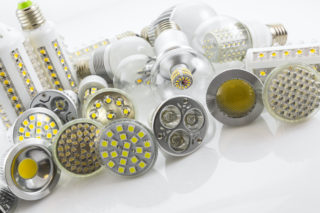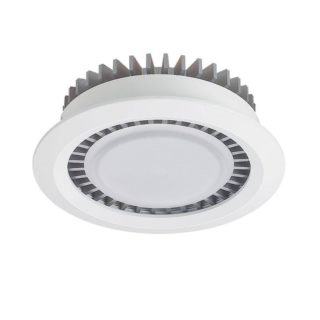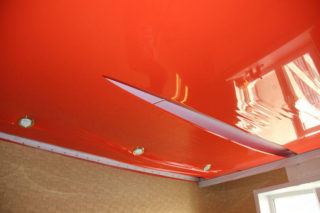To replace a burned-out light bulb in a luminaire, you need to understand the types of devices and choose the right element that has failed. It is important to understand how the light source is structurally arranged so as not to break it, not to damage the decoration of the room. Before going to the store, you need to determine the type of product, type of base, power. Having complete information, you can easily change the LED bulb in the spotlight yourself.
Types of bulbs used

Point light sources are used as the main and as auxiliary devices for focusing attention on individual elements of the interior. The characteristic feature is the limited emission angle. The light is directed. This makes it possible to apply special design techniques, combining the number and characteristics of lamps, so that the house takes on an original look.
Traditional filament products are a thing of the past. Production is limited, in the coming years their market share will be measured by a few percent. The most popular are LED and halogen lamps.

Unlike the old-style lamp, where a vacuum is created in the bulb, modern products contain additional substances that improve the quality of the device and its efficiency. If iodine or bromine is used in production, the models are called halogen. In principle, they do not differ from traditional products.
Fluorescent lamps are a gas-discharge device, where a phosphor begins to glow in mercury vapor under voltage. The LED is a semiconductor element with high efficiency and low operating temperature.
Comparing halogen and LED lamps in terms of the totality of characteristics, several features can be noted. Halogen models need high temperatures up to 500 ° C for optimal light output, LED counterparts need a value of 60-100 ° C. Many experts believe that halogen is more pleasing to the eye, similar to daylight, and provides high quality illumination.
Halogen is 2 times cheaper, but it also has a shorter service life. In terms of economic indicators, LED lamps are more profitable.
Types and methods of fastening

Before changing LED lamps, you need to find out the features of their attachment. Products in this category are divided into the following three types:
- built-in;
- waybills;
- suspended.
Built-in lamps require space, so they are installed on frame bases, for example, in a suspended ceiling made of plasterboard, plastic, panels. Overhead variants can be fixed to any suitable surface.
Regardless of the mounting design, the luminaires can be rotary and stationary. Spring brackets, screws, self-tapping screws, bolts, rarely nails are used as fasteners. Luminaires are available for 220 W and with a 12 W transformer. If a room with high humidity is equipped, for example, a bathroom, it is better to choose a lower power for safety.
When installing on drywall, do not use the supplied hardware. You need to purchase special items, such as a "butterfly".
Light source replacement steps
Before replacing spotlights, turn off the light supply. Before going to the store, you need to remove the old lamp and see its design. Sometimes problems arise with built-in models, with MR16 lamps, which use hidden fixation.This can be a spring clip or a threaded ring. You need to look in the product passport how to open the ceiling lamps to replace the lamp, if there are no obvious fixing elements. In such products, GU4, GU5,3, GU10 pin bases are most often used. The two contacts are inserted like a regular socket into the holes.

The same principle of fixing for lamps G9 and G4, where the number means the distance between the pins. There are two types of lamps used: halogen and LED. They differ from the GU series in the shape of the flask - it is finger-shaped, not conical.
Another increasingly popular standard is designated by the abbreviation GX53. This is also a pin base with a reduced thickness (1.5 cm). You need to work with them in the same way as when replacing an LED light bulb of other standards. These lamps are often called tablets. The advantage is that it is possible to significantly reduce the ceiling space, which is important when installing tension and plasterboard structures.
There are no problems with screw lamps. The element is twisted counterclockwise, twisted in the opposite direction. The most popular models are E27 (large base 27 mm), E14 (small base 14 mm).
The bayonet mounting system is practically not used anymore. Finding a lamp and a base with a swivel mechanism is problematic, it is easier to notice the whole cartridge.

Replacing bulbs is done as follows:
- The power supply is cut off.
- Removable retainer, protective transparent case.
- The lamp is unscrewed or removed.
- Recessed luminaires are removed from the base if necessary.
- The name, type, power is checked and checked in the passport of the luminaire with the recommended and maximum power values.
- A new one is screwed in with the same characteristics as the burnt one.
- The lamp is being assembled.
After complete completion of the installation, you can supply electricity.
Special attention should be paid to the operation of replacing lamps, if the ceiling is stretch. Under the lamp, a reinforcing ring is previously mounted on the canvas, which protects the base from rupture. It cannot be dismantled.
Plasterboard ceilings are not made with reinforcing elements. Difficulties can be caused by the complex design of the LED chandelier. How to change the lamps in it, you can find out in the instructions for the product.
Bulbs of halogen lamps should not be touched by hand. Installation is recommended with gloves.
Security measures

In work, first of all, you need to take care of your health. All work is carried out with a completely disconnected electricity.
Energy-saving fluorescent lamps must be protected from destruction. They contain mercury. For this reason, lamps must not be disposed of with household waste. You need to take them to the collection point.
If it is necessary to extend the cable, you need to use connectors or securely wrap the twist with insulating tape. Scotch tape, adhesive plaster cannot be used.
Special care should be taken when working with stretch ceilings. It can be difficult to insert an LED lamp into a ceiling lamp on such a base and not damage the coating. Accidental contact with a sharp object can result in complete loss of the blade.
If the luminaires are installed in a suspended ceiling, niche, furniture, only LED lamps are used for this purpose. Working temperature around 70 ° C will not damage wood, laminated chipboard, LMDF.








